
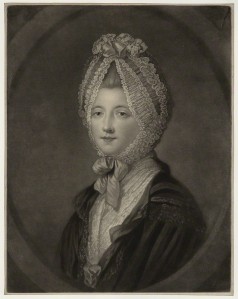
The Gunning sisters: Maria, Countess of Coventry (1733-1760) and Elizabeth, Duchess of Argyll (1734-1790),
Mezzotints by John Finlayson (Maria, on the left, or top, depending on your device) published in 1771, Elizabeth, on the right, published in 1770) after paintings by Katherine Read.
© National Portrait Gallery, London
Perhaps it’s projection, or Read, an experienced society portraitist, really did put a hint of slyness in Maria’s expression, and caught Elizabeth’s bland composure and self-determination.
Being defined by being beautiful and nothing else has always come at a price: Maria died aged only 27 of blood-poisoning caused by the excessive use of lead in her make-up. Ten thousand people went to look at her coffin.
We – the observers, then and now – are so afraid of our own mortality, so needy for affirmation of own moral superiority, we like to believe that if she had not been so vain, she could have controlled her fate.
It depends on your definition of vanity, of course. If she had been a plain woman, or an old woman, spending time at the dressing-table before going out to work, or the shops, or being forced to stay in for BT or the gasman, taking the trouble to put on a bit of powder of lipstick, we would call her “well-groomed”, and be cheered up by her sense of social responsibility.
If she was a blogger, anxiously counting her “Likes”, screaming at the screen because she didn’t have enough Followers, would we call her vain?
Everything is vanity, traditionally: every thing that makes life bearable. Beauty, comfortable housing, not just the cushions and the free-standing bath (god, I’d love that, if I had the space and the plumbing wasn’t so crap) but the external structure of your home – why can’t you live in a nicely frescoed cave? – and the fixtures and fittings inside – the fireplaces, the built-in cupboards, the curtains, even your books, your pictures, your hobbies, your phones, your tablets – not to mention your bank accounts, which the government are probably looking at already – so why can’t we give that girl the right to own her face?
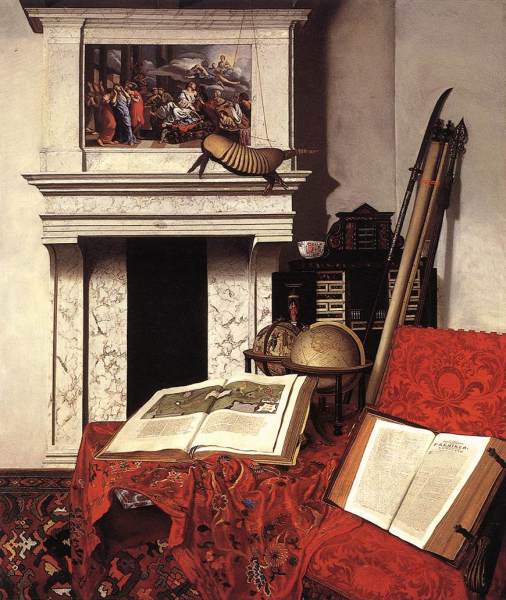
Jan van der Heyden Still-Life with Rarities, 1712, Oil on canvas, Szépművészeti Múzeum, Budapest.
Image: WGA
“Rarities are vanities” – the pointlessness of civilization and individuality (but oh! what a nice fireplace for the cool light of a modern home, with an optional armadillo swinging by).
We don’t think, if we hadn’t been so addicted to looking at her, thousands of us looking at her, criticizing her, aggrandizing or belittling her, she wouldn’t have been so obsessed with how she looked in our eyes. She wants our approval, we want her to have our approval, we want to own her, a fiction of our making, and we, like drug dealers, push her, this lovely, stupid, vulnerable girl, into the habit.
Every time you notice she’s got a zit, are you relieved to see she’s as prone to imperfections as you? Then it’s you who are vain.
Oh, look – beauty and tragedy, in one stroke. Eat this lovely red apple, Snow White. We’ll give you a happy ending if we feel like being cheered up, but sometimes tears are even better; they make us feel we are good people.

La Toilette engraving by Saint Aubin, 1748, Bibliothčque Nationale, Paris. Image: WGA
As well as pretty shells and gurgling putti, flower garlands and little baa lambs, Rococo imagination played with sinister, grotesque and entomological figures long before pseudo-medieval horror entered mainstream culture, and these giant butterflies, descended from fantastical stage-set monsters of a hundred years earlier, so closely resembling science-fiction aliens of today, might be visible fluttering around our own dressing-tables in the blinking of an eye…
The younger sister, Elizabeth, had more sense and a stronger instinct for self-preservation. She never lost the proverbial “luck of the Gunnings”, and she had a natural dignity of her own. She was a successful serial gold-digger, marrying two dukes and being engaged to a third in between, finally being granted a noble title in her own right by a besotted George III.
Hers was the sort of life, like Lorelei Lee’s, in which “Fate keeps on happening”.
There was something of a life-force about Elizabeth, which was her greatest beauty.

Portrait of the Duchess of Hamilton and Argyll by Joshua Reynolds, oil on canvas c 1760-61.
Image: Wikipedia.
Elizabeth, the younger sister by a year, wearing the ermine edged crimson coronation robes of a duchess, as you do, while you lean nonchalently on a plinth in a park.
The robes are only worn on the ceremonial occasion of the sovereign’s coronation, in this case, George III’s.
At the time Reynolds painted her portrait, Elizabeth had been recently widowed and was a dowager duchess at the age of twenty-four; she quickly married another duke in time for the new king’s accession, proving the luck of the Gunnings, that gentlemen marry brunettes, that Fate keeps happening, and that it’s hard to tell the difference between history and fantasy.
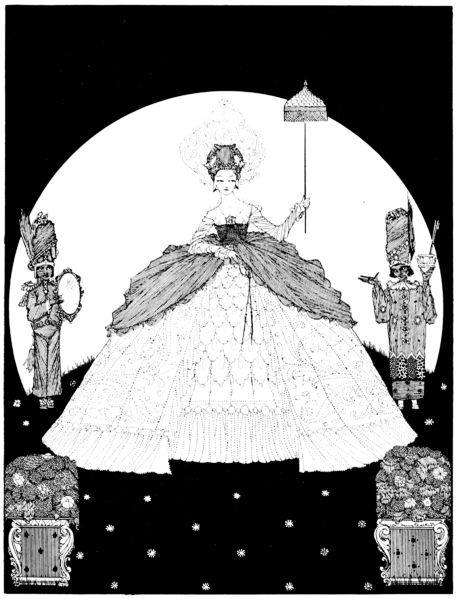 Illustration by Harry Clarke to The Fairy Tales of Charles Perrault, published in 1922 by Harrap. Image: Wikipedia
Illustration by Harry Clarke to The Fairy Tales of Charles Perrault, published in 1922 by Harrap. Image: Wikipedia






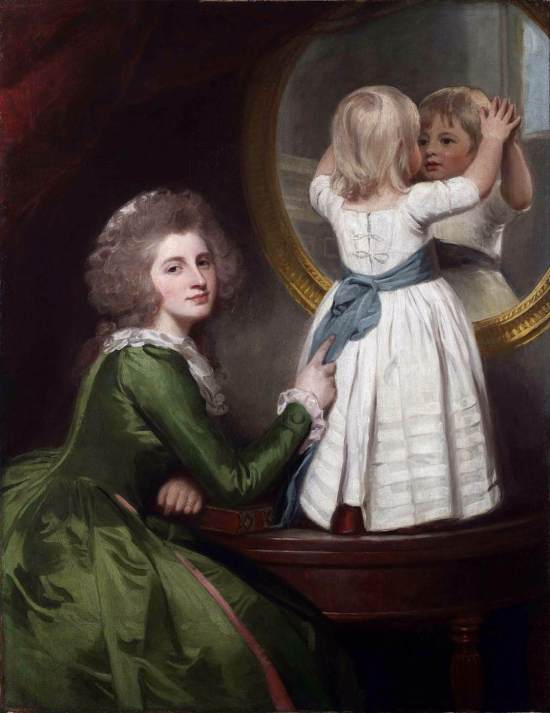

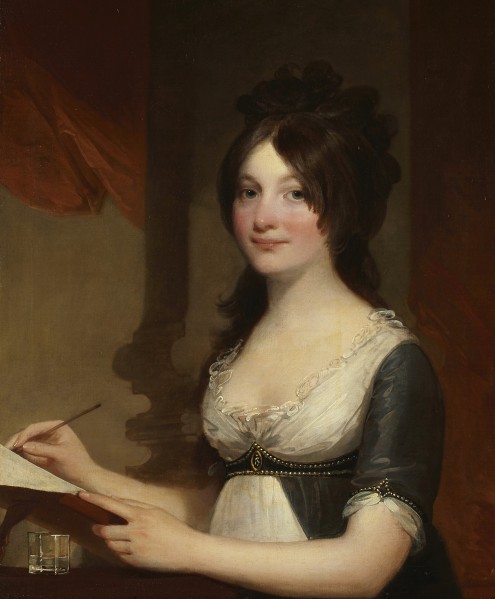





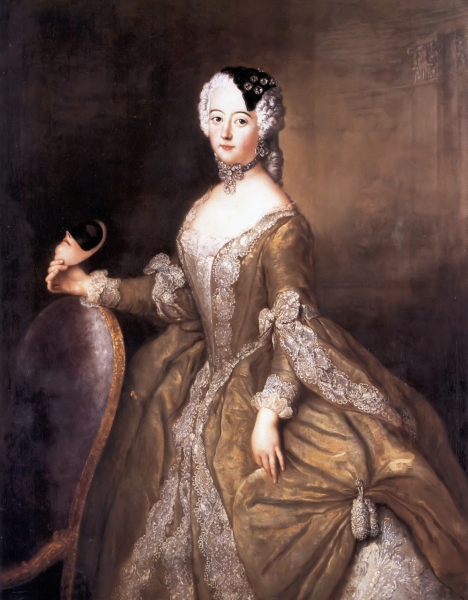





 Illustration by Harry Clarke to The Fairy Tales of Charles Perrault, published in 1922 by Harrap. Image: Wikipedia
Illustration by Harry Clarke to The Fairy Tales of Charles Perrault, published in 1922 by Harrap. Image: Wikipedia